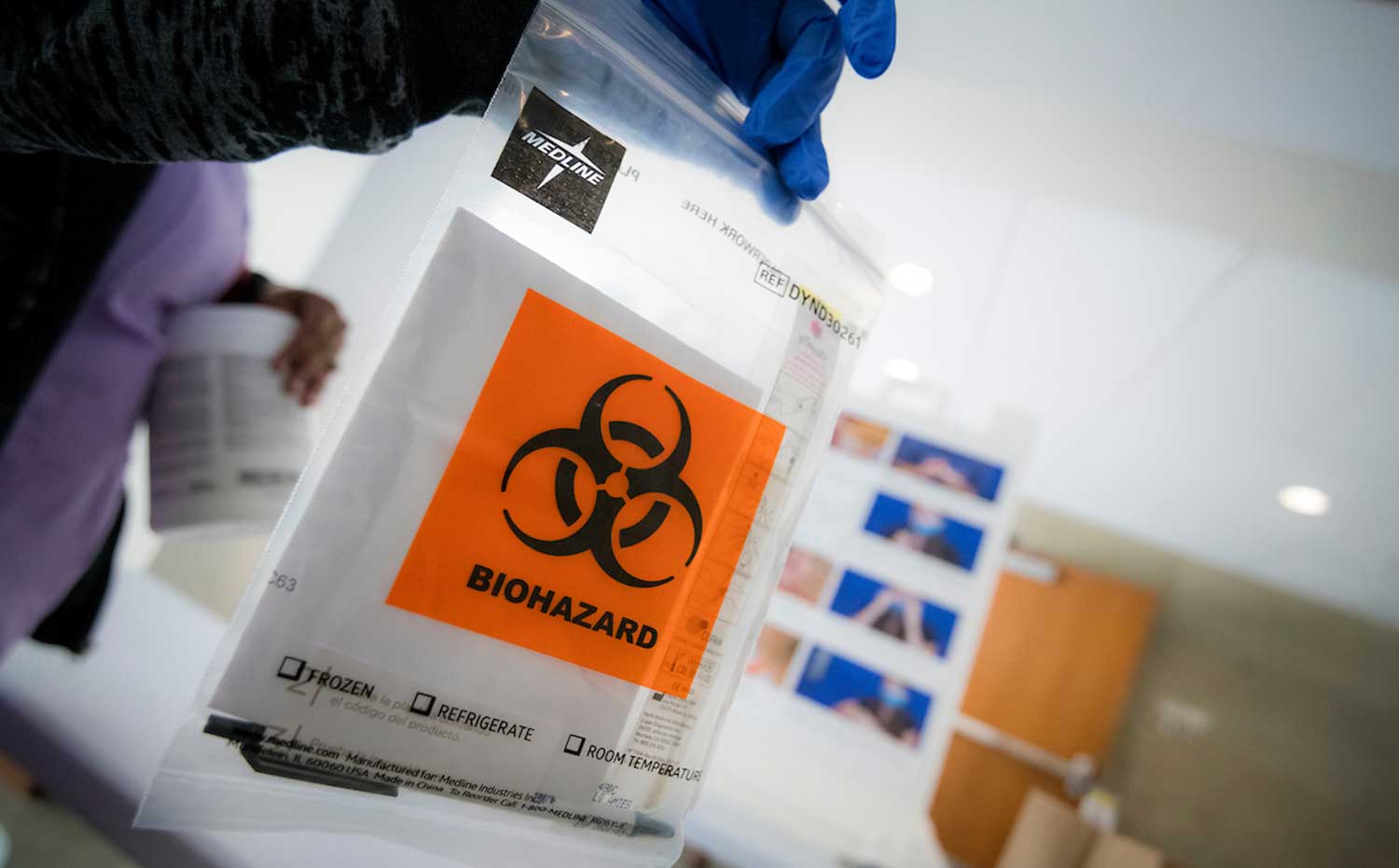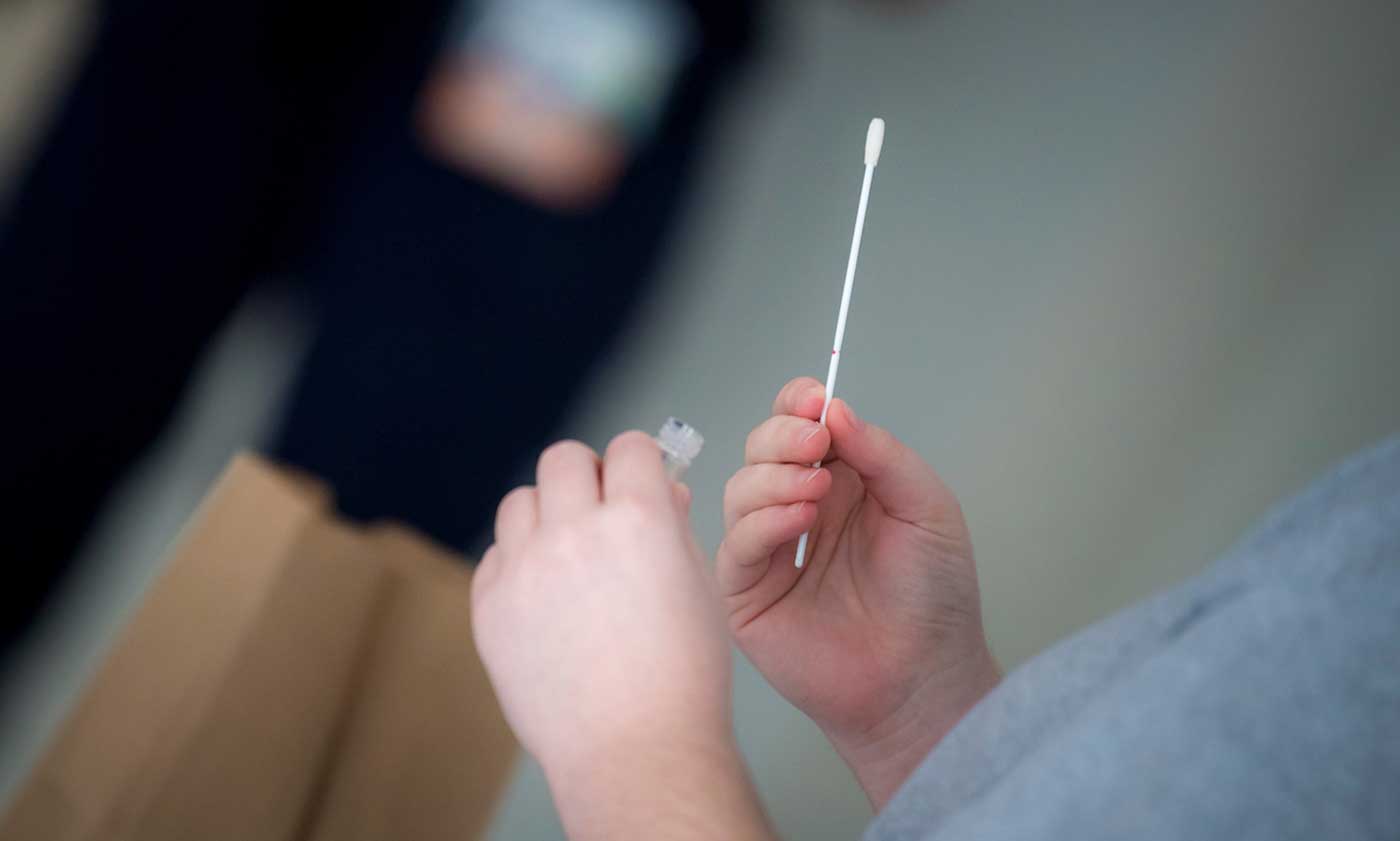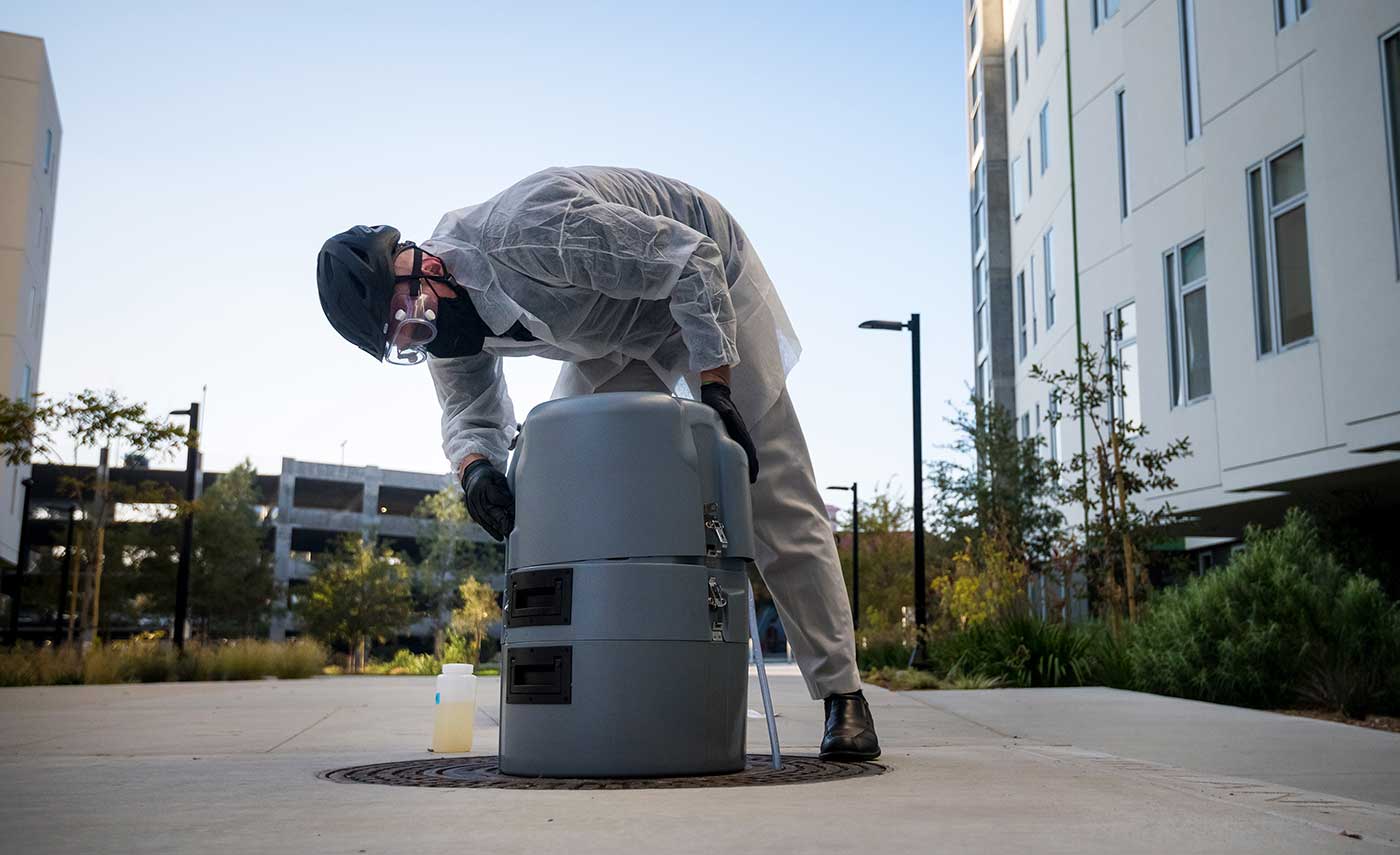
By:
- Erika Johnson
Published Date
By:
- Erika Johnson
Share This:

Photos by Erik Jepsen/University Communications.
Q&A: Ramping Up Safety in the Purple Tier
Over the past several weeks, the map of California has been steadily shifting from orange to red and now predominately purple as the number of COVID-19 cases rise and counties have slowed operations. Despite the spikes, UC San Diego has successfully curtailed outbreaks through a combination of strategic public health interventions driven by the university’s Return to Learn program.
Looking at the larger context, we explore what changes have been happening on campus since the county’s purple tier designation, including the introduction of self-administered testing kits for students, provision of more frequent testing, an expansion of the university’s innovative wastewater monitoring program and more.
Q. What does it mean to be in the purple tier?
A. San Diego County moved into the purple tier on Nov. 10. The colored tier system originates from California Governor Newsom’s “Blueprint for a Safer Economy.” The four-tiered system tracks the number of COVID-19 cases recorded each day and the percentage of positive cases out of the total number of tests administered within each county.
Definition of tiers:
- Tier 1 (Purple): Widespread with more than 8% positive cases and more than 7 new daily cases per 100,000 people.
- Tier 2 (Red): Substantial spread with 5-8% positive cases and 4-7 new daily cases per 100,000 people.
- Tier 3 (Orange): Moderate spread with 2-4.9% positive cases and 1-3.9 new daily cases per 100,000 people.
- Tier 4 (Yellow): Minimal spread with less than 2% positive cases and less than one new daily cases per 100,000 people.
Q. What has changed at UC San Diego since the county moved into this designation?
A. Although the County of San Diego has moved into the purple tier with a 3-9% daily positivity rate, the UC San Diego campus has maintained a very low student positivity rate of 0.4%. In following county health orders, UC San Diego has transitioned all in-person classes into outdoor teaching spaces or remote only formats. In addition, students who live on campus are required to wear a mask at all times within their apartments and suites, except in their own private bedrooms and in the shower as well as whenever they leave their residence.
Q. Will testing frequency be increasing?
A. In light of the recent rise in cases around San Diego County and across the nation, student and employee testing for COVID-19 is now offered on a weekly basis at no cost through UC San Diego Health. Though this is currently optional, all campus community members are strongly encouraged to test more frequently. Formal weekly testing requirements will be introduced in the winter quarter for students. To schedule an asymptomatic test, visit the testing and screening page. Please note that some of the drive-up and walk-in testing sites have adjusted hours for the holiday season.

Q. What are the benefits of the new self-administered COVID-19 test kits?
A. Undergraduate and graduate students—including those living in Grad and Family Housing and off campus students—may now take part in a pilot program for self-administered asymptomatic COVID-19 testing. The benefits of this new program include picking up the kit when it is convenient, as well as conducting the test at a time and location that works best for the student. In addition, there is no appointment needed and no wait time involved in picking up and dropping off testing kits. Results will continue to be returned within 24 hours.
Q. Where can students find test kits, and how do they work?
A. Students may pick-up and drop-off a testing kit between the hours of 9:00 a.m. and 4:00 p.m., seven days a week at the locations below. Kits include instructions and the supplies needed for testing. Completed kits should be returned within 72 hours of pick-up. Students can watch a demonstration of how to complete a sample collection here.
Tests can be picked up and dropped off at one of the following sites:
- 7th College (Parcel Center)
- Nuevo East (Fitness Center)
- Price Center Ballroom B
Coming soon: Vending machines will be available across campus where students can pick up testing kits by swiping their student ID card. The program will also expand to employees in the near future.
Q. What should students know before picking up their first testing kit?
A. All students must register for MyStudentChart in order to receive COVID-19 testing instructions and result notifications. To register for MyStudentChart, follow the three easy steps below:
- Download the MyChart app on your mobile device. The free app is available in the Apple App Store for iPhone or the Google Play Store for Android phones.
- Open the MyChart app and select organization: UC San Diego Student Health & Well-Being.
- Login using your AD login/password.

Q. How has the campus’s wastewater monitoring program expanded?
A. On Nov. 22, UC San Diego’s wastewater monitoring program expanded to include 52 samplers distributed across campus. The goal is to increase this number to more than 200 within the next month. Samples collected are analyzed daily, which enables researchers to detect even a single case in a building or cluster of buildings.
SARS-CoV-2, the virus that causes COVID-19, can infect epithelial cells in the gut and result in diarrhea; however, many people who are shedding the virus in their stool don’t have diarrhea. Through the monitoring system, it is possible to detect the presence of the virus even before it appears in a nasal or saliva test. When combined with other public health interventions such as viral testing and contact tracing, this strategy has proven to be an important way to keep the university population safe.
Share This:
You May Also Like
Stay in the Know
Keep up with all the latest from UC San Diego. Subscribe to the newsletter today.


